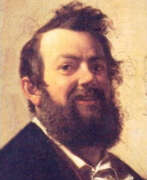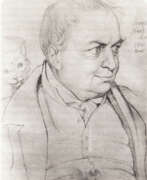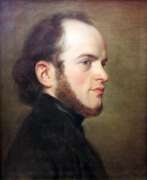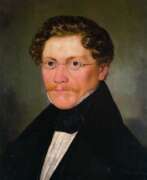Illustrators Biedermeier


Johann Peter Hasenclever was a German painter of the first half of the 19th century. He is known as a painter, a representative of the Düsseldorf school of art, who is considered one of the founders of German genre painting.
Hasenclever began his work by interpreting biblical, mythological and romantic subjects, but eventually found his calling in humorous scenes from bourgeois life, especially Pyrenean towns and cities. Among his famous works are "The Amusing Examination," "The Reading Room," and "The Trial of Wine," distributed in engravings and lithographs.


Joseph Anton Koch was an Austrian painter, draughtsman and printmaker, master of etching and illustration, novelist and representative of the classicist landscape in German art. In his native country he was associated with the Biedermeier aesthetic, and in Rome with the Nazarene society.


Adrian Ludwig Richter was a German Romanticist and Biedermeier painter.
Ludwig Richter studied painting at the Dresden Academy of Art. His travels, especially to Italy, played an important role in the further development of his talent, during which Richter was introduced to the Nazarenes and Joseph Anton Koch. After his return to Germany, the artist works as a draftsman at the Meissen Porcelain Manufactory, then teaches landscape painting at the Dresden Academy.
Since the late 1830s Richter is increasingly active as an illustrator (including for publications of fairy tales by the Brothers Grimm). Having made about 3,000 woodcuts for 150 works of art, Richter became one of the most popular artists in Germany. At the same time, 'large format painting' seems to recede into the background for him. A developed eye disease, which made the artist almost blind, forced him to leave painting in 1873.


Adolph Friedrich Erdmann von Menzel was a German Realist artist noted for drawings, etchings, and paintings. Along with Caspar David Friedrich, he is considered one of the two most prominent German painters of the 19th century, and was the most successful artist of his era in Germany. First known as Adolph Menzel, he was knighted in 1898 and changed his name to Adolph von Menzel.
His popularity in his native country, owing especially to his history paintings, was such that few of his major paintings left Germany, as many were quickly acquired by museums in Berlin. Menzel's graphic work (and especially his drawings) were more widely disseminated; these, along with informal paintings not initially intended for display, have largely accounted for his posthumous reputation.

